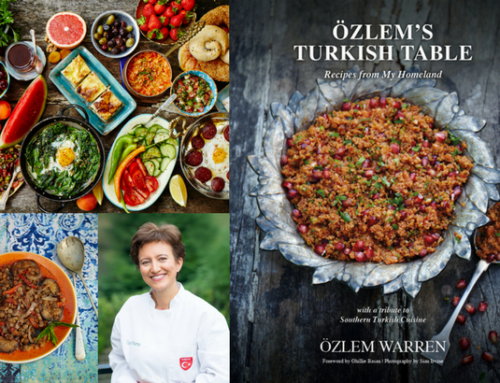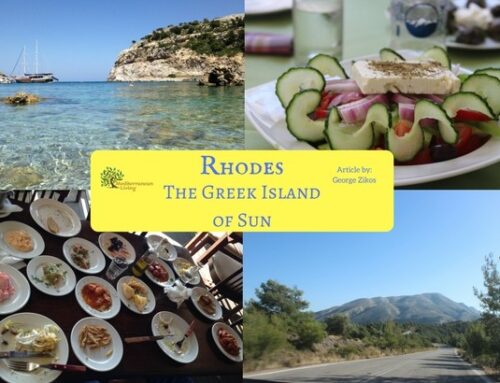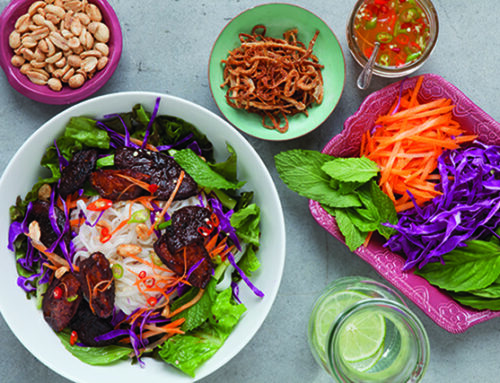Mediterranean Vegetarian Feasts
By Sarah Hodge
Updated December 12, 2014
Like many Greeks, Aglaia Kremezi grew up eating mostly vegetarian food: foraged greens, garden vegetables, beans of all kinds, fruity olive oil, and local cheeses and yogurt. Until recently, this was a typical Greek diet; meat was traditionally a rare and expensive commodity reserved for Sundays and holidays (daily meat consumption is still a relatively new phenomenon in Greece) and thus Greeks were mainly vegetarians out of necessity.
Kremezi owns a cooking school in Greece called Kea Artisanal, and is the author of the popular “The Foods of Greece” and “Mediterranean Hot and Spicy.” Her newest cookbook “Mediterranean Vegetarian Feasts” contains 150 simple, yet abundantly flavorful, plant-based seasonal dishes from Greece, Turkey, Syria, Lebanon, France, and Italy. Sample seasonal menu suggestions offer a wide range of options, including several buffet spreads and one-pot family meals. Recipes are conveniently labeled as vegan and/or gluten-free when applicable, and ingredients are given in American and metric measurements. There is a comprehensive list of online and mail order sources to ensure that you have the necessary ingredients on hand. In the spirit of Mediterranean cuisine, “use only what is freshest and in season;” Kremezi suggests that you “go to your local farmers’ market without a recipe or shopping list in hand, choose the seasonal produce that inspires you, and only then search the pages that follow for a recipe that will showcase your fresh ingredients.”
The book begins with a chapter on basic preparations and techniques. Here you will find an arsenal of herbs, seasonings, pickles and preserves that will allow you to quickly transform a dish. You’ll also find an excellent guide to preparing and storing various types of leafy greens. Meze are the star of the show, including dips and spreads, salads, and baked and fried vegetables. If you are planning an all-meze meal (my favorite kind!), start with spreads, pickles, and cold vegetable dishes, then finish with the warm plates. Kremezi suggests serving meze with ouzo or white or rosé wines.
In addition to Greek dishes, you’re just as likely to come across a Tunisian dish as a Balkan, Sicilian or Turkish one. Some of my favorite discoveries were the quince stuffed with wheat berries, nuts, and raisins, zucchini rolls stuffed with halloumi, and flatbread with dried figs, Roquefort cheese, and rosemary. The section on breads is excellent, including a homemade version of tortas de aceite as well as a pumpkin, tangerine, and marmalade bread. Desserts include a custardy orange and crumbled phyllo cake, rustic chocolates with dried figs, pistachios and toasted nuts and a quince spoon sweet (I loved the spicy variation infused with ginger, allspice and cayenne).
Along the way, Kremezi imparts many fascinating stories into the origins of ingredients and techniques common to Mediterranean cuisines, and the stunning photography by Penny De Los Santos captures fresh produce, ingredients and dishes in a series of vibrant still lifes. The diverse Mediterranean vegetarian (and vegan) dishes featured within are sure to delight even the pickiest eater or devout carnivore. Sadly, all too often vegetarian main courses seem like an afterthought, but the recipes showcased in “Mediterranean Vegetarian Feasts” are certain to become instant classics and bring vegetables and whole grains back into the spotlight where they belong.
Whether you are already vegetarian or are simply interested in the Mediterranean diet and eating more healthfully, “Mediterranean Vegetarian Feasts” deserves a place of honor in your cookbook collection. καλή όρεξη!












Bill Bradley, R.D. says:
Bill Bradley, R.D. says:
Bill Bradley, R.D. says: